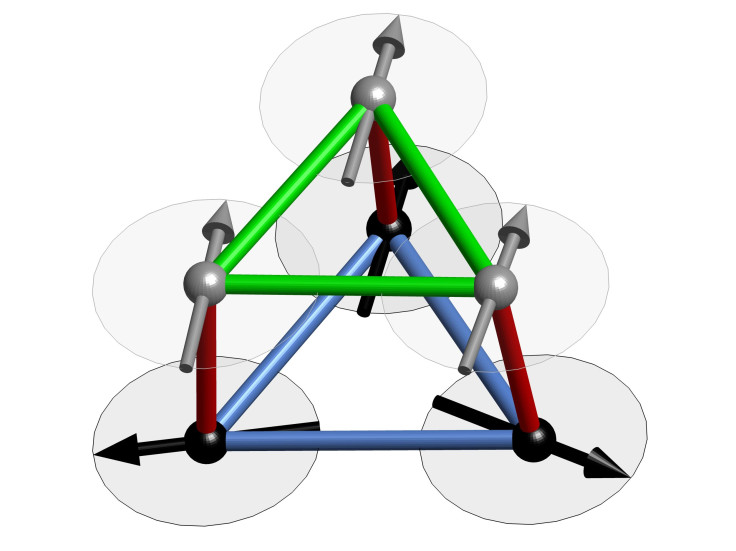‘Quantum Spin Liquid’ — A New State Of Matter — Observed In A Material Where It Shouldn’t Exist

In April, scientists announced that they had discovered a brand-new state of matter — one that wasn’t solid, liquid, gas or plasma. Now, this “quantum spin liquid” has been found again, only this time, this state of matter has been observed in a material where it shouldn’t exist.
Before we delve into a detailed explanation of what the latest discovery implies, here’s what we need to know about this mysterious new state of matter whose existence was first predicted in certain magnetic materials 40 years ago.
Despite its name, quantum spin liquid is not a liquid. The “liquid” in its name refers to the state of the quantum spins of its constituent electrons — one of the most intrinsic properties subatomic particles possess. However, it does not in any way imply that the electron is actually spinning. Instead, it refers to a type of intrinsic angular momentum that can be “up,” “down” or in a state of superposition, wherein a subatomic particle possesses both spins simultaneously.
Usually, as a material is cooled, its electrons’ quantum spins begin aligning, so that eventually they are spinning in the same direction. However, a material containing a spin liquid state — even when cooled to absolute zero — does not exhibit this feature, and the spin of its electrons continues to fluctuate wildly.
In April, scientists discovered evidence for this new state of matter in alpha ruthenium chloride — a two-dimensional material with a honeycomb structure. They were able to spot this evidence in the material by observing what is known as “electron fractionalisation” — wherein electrons appear to break apart — and the resulting quasiparticles called “Majorana fermions,” which are created when electrons in a quantum spin state split apart.
It is important to note that electrons, which are fundamental particles, do not actually split apart. They just behave as if they have, and, by assuming that the Majorana fermions are real — rather than quasiparticles — scientists can explain the behavior of quantum spin liquids.
Scientists have believed that spin liquids can occur in materials exhibiting antiferromagnetic interactions — wherein spins of constituent electrons align into opposite states throughout the material at low temperatures — having a triangular atomic arrangement.
Until now.
As described in a new study published in the journal Nature Physics, a team of physicists were able to observe this new state of matter in a material where, according to conventional understanding, it shouldn’t exist — a monocrystal of calcium chromium oxide. Although the material exhibits antiferromagnetic interactions, it has much stronger ferromagnetic interactions — something that should prevent quantum spin liquid behavior. But, for some strange reason, doesn’t.
“We have proved empirically that interesting quantum states like spin liquids can also occur in considerably more complex crystals with different constellations of magnetic interactions,” lead author Christian Balz, from the Helmholtz-Zentrum Berlin für Materialien und Energie in Germany, said in a statement. “The work expands our understanding of magnetic materials, and also shows us that there are potentially far more candidates for spin liquids than expected.”
Apart from its theoretical implications, the discovery also has the potential to change our understanding of how to make viable quantum computers that would be orders of magnitude faster than their conventional counterparts.
“This could be important for the advancement of quantum computers in the future because spin liquids are one of the possible building blocks for carrying the smallest unit of quantum information, known as a qubit,” Balz said.
© Copyright IBTimes 2025. All rights reserved.





















